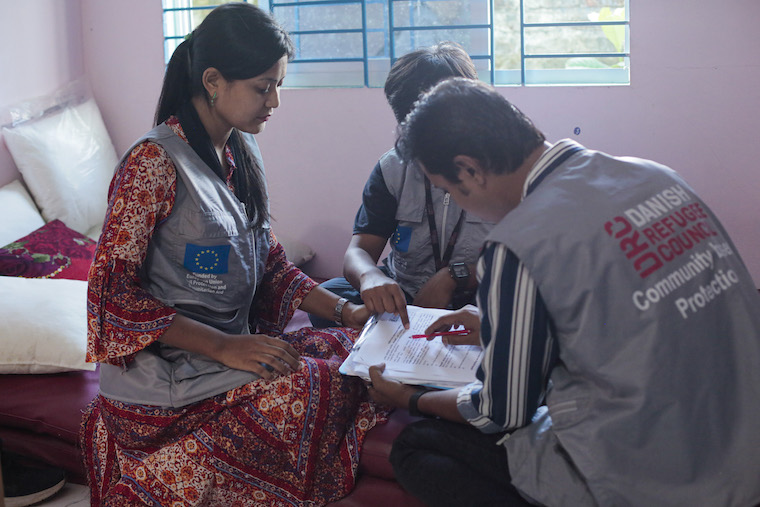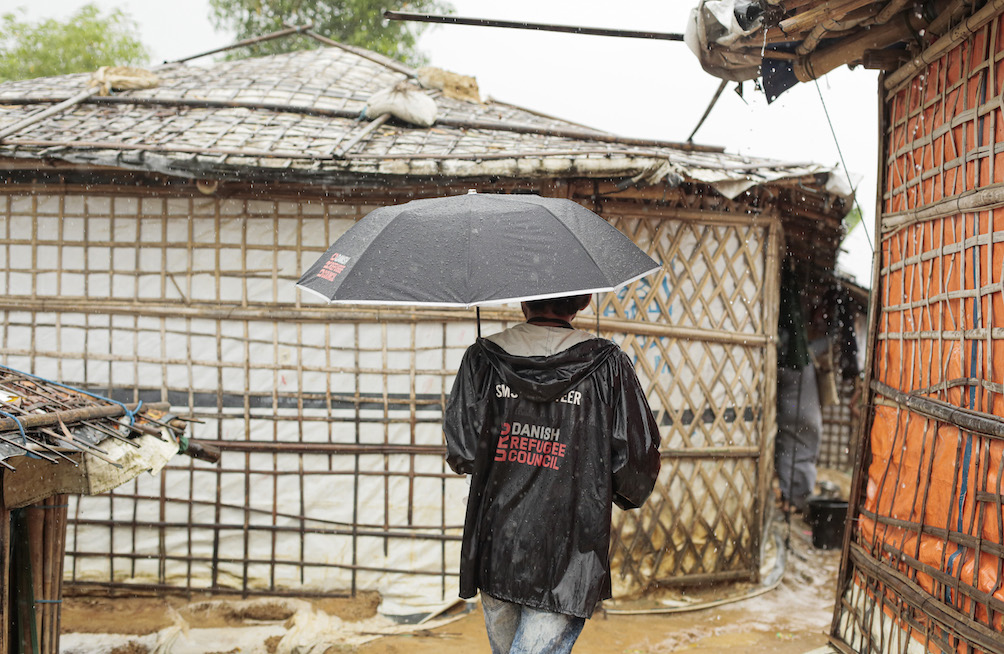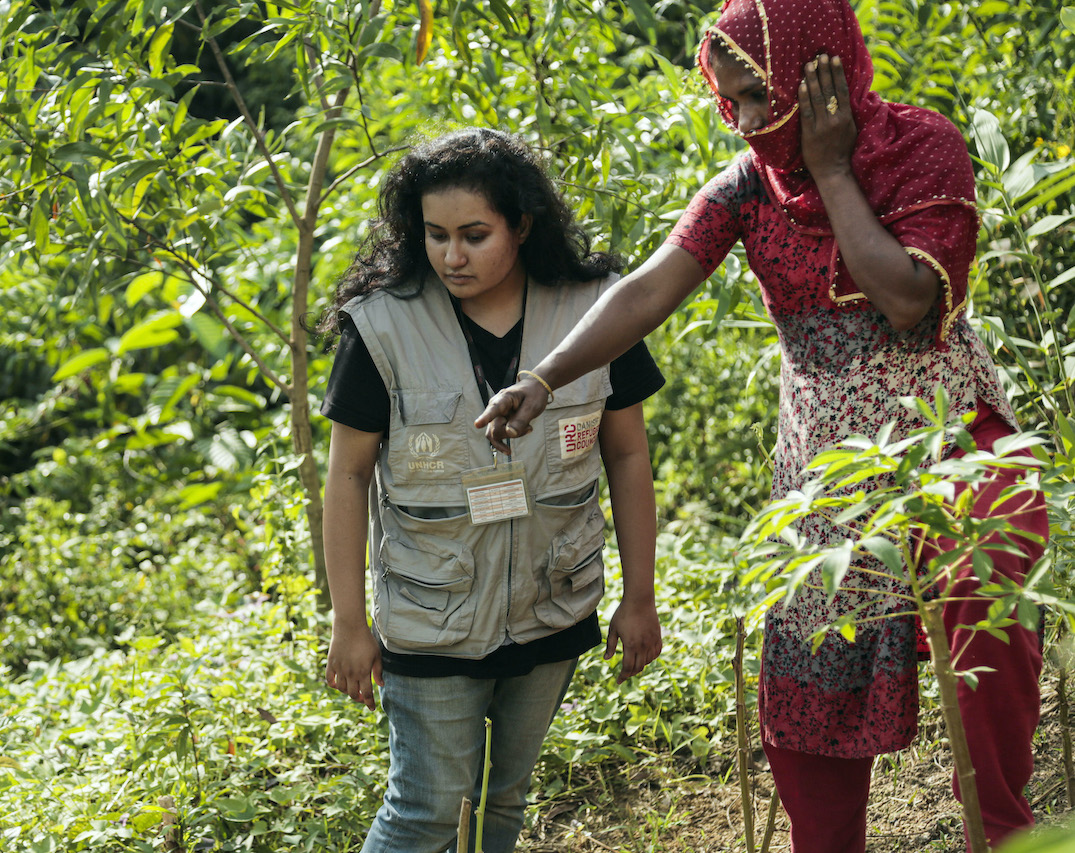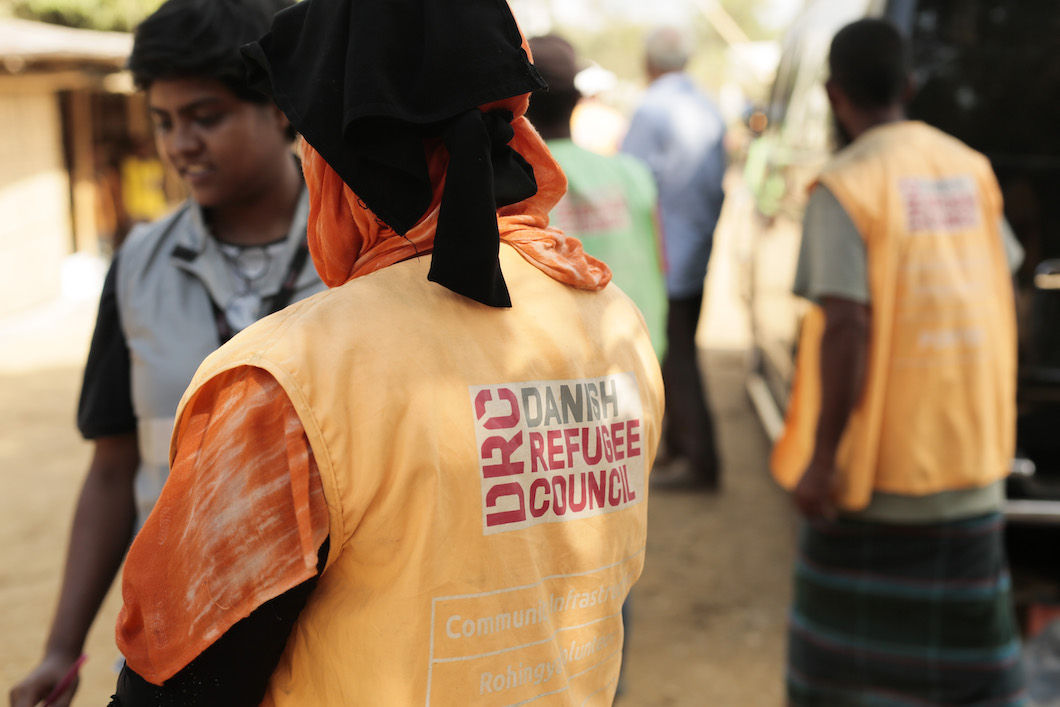Case Management for the Rohingya Crisis - The use of ActivityInfo by the Danish Refugee Council in Bangladesh
Executive Summary
The Danish Refugee Council in Bangladesh provides support to refugees and host communities in the country, following the displacement of 671,000 Rohingya to Cox’s Bazar and Bandarban districts in 2017.
Among a variety of programmes the organization works with a comprehensive case management programme under the Protection Programme to provide assistance to identified vulnerable individuals in Cox’s Bazar.
The case management team decided to use ActivityInfo as their case management system in 2019, driven by the urgent need to digitize their paper-based case management system to see data in real-time and be able to quickly inform and adopt their response.
Furthermore, by selecting a cost-effective measure they could guarantee a sustainable solution for informed and evidence-based programming.
Before that there was an average of 60 cases per month and multiple requirements and processes for each case which complicated the daily work of Case workers.
The team set up their Databases and designed their Forms and Subforms to reflect the paper-based forms and the processes already in place.
They used customized Serial Number fields to track individual cases without revealing sensitive information and the reference fields to connect the Forms to each other.
They also used ActivityInfo offline to collect data from camps and host communities when the Internet connection was not of good quality. The team was trained to use the platform during training sessions that covered the case management and protection subjects which usually lasted up to three days.
For 2020 the case management team of the DRC in Bangladesh plans to restructure the Databases in ActivityInfo and to use more features such as the API or the reporting capabilities of the platform in order to create an even more robust, comprehensive platform for case management.
We spoke with Mrs Neda Sepehrnoush, Information Management Manager in the DRC Bangladesh who shared with us the way the platform is used for case management and the reasons why they selected it instead of other solutions.

The Danish Refugee Council in Bangladesh
Established in 1956 and present in 40 countries, the Danish Refugee Council (DRC) is a humanitarian, non-governmental, non-profit organisation with the mandate to assist populations affected by conflict, such as refugees, internally displaced people and host communities.
The Danish Refugee Council works with multiple programmes to provide ‘durable solutions’ to the affected populations and to assist in the asylum procedures as well as the protection of refugees.
Following the influx of over 671,000 Rohingya to Cox’s Bazar and Bandarban districts of Bangladesh in 2017, the Danish Refugee Council deployed their emergency team in Bangladesh who started working on the interagency response to the new crisis so as to provide support to the refugees and the host communities in the country.
Some of the programmes that the Danish Refugee Council in Bangladesh is working on include Shelter and Infrastructure, Site Management, and Protection.
The Protection programme includes the Child Protection, the Gender-based Violence and the General Protection programme.
Case management falls under the General Protection programme.
The case management team of the DRC in Bangladesh supports the protection needs of the affected populations by providing safety plans, direct assistance and referrals to other services for identified vulnerable individuals.

From a paper-based case management system to an online case management database
The Danish Refugee Council in Bangladesh started using ActivityInfo in 2019 as their case management system. Before the adoption of ActivityInfo, the whole case management system was paper-based and aimed to assist the displaced Rohingya population across 12 refugee camps in Bangladesh as well as the host community sites in the country.
This complicated the work of the team as there was an average of 60 cases per month with frequent follow-ups that needed to be handled urgently. Also, in case management each case has to go through many stages and sometimes the requirements for individual cases vary.
Mrs Neda Sepehrnoush, Information Management Manager in the DRC Bangladesh is the person who tested and selected ActivityInfo as the case management system. She explains:
“One of my main tasks when I joined the mission in Bangladesh was to come up with a solution for our case management system.
In general, starting in 2019 we were trying to digitize as much as possible of our systems and for all sectors.
Case management was one of the most important ones because it was quite difficult for our reporting requirements. So I had to look at the available options for us and consider the needs and resources.”
The country office after considering the advantages and disadvantages of building their own in-house system or using other open source platforms, decided to use ActivityInfo for their case management activities because there was an urgent need to put a system in place quickly and easily.
“I was asking people about the systems they were using and I was looking online at what is available and that is how I found ActivityInfo.
One of the great things about it for me was that it was easy to maintain. It was very quick to set up and start using. The time from the day you decide to start using it to actually start data collection is very short. Another reason is that you don’t need to have a technical expert, like a developer in-house to actually start creating more Databases or do modifications.
This is a huge plus because it’s not usually easy. Even when you get a good expert they might leave and you must have a very good option to replace them.
So it is very easy for a new person, like any of our current Information Managers in the office, with a short training and the available resources found on the website to start using, modifying and creating new Databases.” adds Mrs Sepehrnoush.
Today more than 40 case workers, under 6 managers, collaborate on the platform for case management activities and the organization is considering the use of the platform for other cases, such as Monitoring and Evaluation.
“We decided to start with case management, even though it was maybe the most complicated case, because of the urgent need.
We decided to start with case management to see how it goes and how it works in practice.”, explains Mrs Sepehrnoush.
The case management system that the Danish Refugee Council has set up in the country consists of a variety of different forms which need to be connected to each other in a way that protects the individual’s personal information.
There is usually a Biodata form that helps to identify each case. Then, there is an Intake form which collects other important information such as the history of the case. This form comes in during various stages for each case. In addition, there are review forms. These forms are used when it is decided to review a case to see if there are changes in the status of the case. Finally, there is an evaluation form which checks whether each case has been handled properly.
This advanced structure of the paper- based system was reproduced in the Databases in ActivityInfo:
“One of the reasons for reproducing this system into ActivityInfo was that we started very fast and we didn’t want our team to have any difficulties. That would be difficulties which would be related not just with adjusting themselves to a new system and going digital - as before the work was only paper-based - but also having all of these changes in terms of the processes they were used to. So this was decided to be ‘phase one’ for us”, adds Mrs Sepehrnoush.
Setting up ActivityInfo for Case Management
ActivityInfo comes with a variety of user permissions and field types for Forms which facilitate the design of Databases for case management.The latest version of the platform, ActivityInfo 4.0 includes a case management Database template as well as adjusted user Roles (such as Case worker, Supervisor, Administrator) to help organizations set up their Database even more quickly.
The DRC team doesn’t work with other partner organizations in case management, so they created teams of around five or six case workers under a team leader. When designing the Database, the Information Management Manager of the team created separate Folders for each Form in order to be able to control the level of access the case workers will have to each individual type of Form.
Also, they created different teams in order to manage the permissions of each case worker at an individual and at a group level. Finally, the use of Subforms inside Forms allowed them to collect additional information for every case.
While discussing how the data collected in Forms and Subforms appears in ActivityInfo 4.0, the latest version of ActivityInfo, especially in comparison with how the data appeared before, Mrs Sepehrnoush observes:
“We designed the Forms and Subforms based on the way they would be displayed in ActivityInfo 3.0. In ActivityInfo 3.0 when you clicked on various cases you could see the Subforms one after another at the bottom of the page.
In ActivityInfo 4.0, when you click on a Subform, you are moved to another page. Still, we decided that ActivityInfo 4.0 is more pleasing to the eye and in general is more straightforward and easier for staff to start working with so we thought it’s worth using it in place of 3.0. That is why we started using it for data entry.”
While designing the different types of Forms for the case management system, the Reference field and the Serial Number field were used to link the Forms to each other without revealing sensitive information about the cases.
The Serial Number field was used to generate a code automatically for each case. By adding a prefix to the Serial Number, the Serial Number is customized based on specific information that the case worker provides and it becomes easier to track without revealing any other information about the case or the individual that the case is related to.
Then, by using a Reference field in the rest of the Forms, the case workers can link the information they add for each specific Form to the specific Case without revealing sensitive information, just by using the customized Serial Number. Finally, some case workers would make the Databases available offline in order to be able to work in places where the quality of the Internet was not good, using their mobile devices.
As the Serial Numbers are automatically generated by ActivityInfo, a connection to the Internet is needed. So the case workers would add some cases before going offline in order to produce the codes. This way they could quickly refer to these at a later point, even when there was no Internet connectivity.
Talking about the importance of working offline, Mrs Sepehrnoush notes:
“The reason why we needed to work offline was because in the camp and sometimes in the host communities and the other places where our case workers go, the Internet connection is not that good. So it is very useful for staff to be able to use the Database when they are in the field.
What we requested from them was to create new case codes whenever they were in the office or the day before they go to the camp, based on the estimated number of new cases they would have.
So even if they didn’t have access to the Internet, they could use that reference code when they were filling out all the other forms.”

Training the team and planning for the future
The case management team of the Danish Refugee Council in Bangladesh runs training sessions to introduce ActivityInfo and refresher training sessions with different themes that are addressed to teams of 5-6 people, every few months.
The first training that the organization did was related to case management and protection and the use of ActivityInfo was covered during a two day session. According to Mrs Sepehrnoush, one day is enough to cover the specifics of the platform and additional days are useful to allow the team to practice on what they have learnt. The use of databases when there is no Internet connectivity was presented at a later point to the team to avoid confusion.
Mrs Sepehrnoush explains:
“One day is usually enough to go through all the forms and processes but it is good if you have another day or two for the team to practice data entry. Having practice cases and different scenarios that they have to manage could be very helpful.
I think refresher training sessions are also important. In the beginning, no matter how much detail you go in, people are kind of disoriented or even overwhelmed because everything is new. Even when everything is simple and straightforward like text fields and selecting options, people can get overwhelmed. When there is a new system they tend to forget and only after they have actually started using the new system will they have actual practical questions.”
In 2020, the DRC office in Bangladesh plans to use more features of the platform, such as the reporting interface and the API in order to produce reports and visualizations for their reporting requirements.
As the activities they carry out are not solely focused on case management but also include referrals, Individual Protection Assistance (IPA), distributions and more, there are reporting requirements for these areas as well. In addition, for some of these activities there are specific reporting requirements by Donors or at the Sector level to allow coordination among all the Protection agencies. So the plan for 2020 is to integrate external systems and bring all the information together so as to have a robust platform to manage everything related to case management and the DRC team.
“This is a priority in 2020 for us. To create dashboards either with the API or the reporting features that are available in Activityinfo to showcase how easily and up-todate the data can be and then start from there to see if we can have any buy-in from other organizations”, explains Mrs Sepehrnoush.
Also, the case management team wants to redesign the whole Database structure for the case management system in order to improve and modify some of the processes.
Mrs Sepehrnoush concludes:
“Going into 2020, the plan is to redesign the system. Now, everyone in the team is very used to the platform and feels comfortable with it. So we can not only improve and modify some of the processes but we can also look into integrations.”
Conclusion
All in all, the Danish Refugee Council in Bangladesh needed to digitize their case management system to address the big load of cases and requirements during the ongoing Rohingya Crisis in Bangladesh. Their Information Management Manager decided to reproduce their paper-based case management system in ActivityInfo. Using Serial Numbers, Reference fields, Folders, Subforms and the advanced user permissions, the Danish Refugee Council office created advanced databases in the platform.
This allowed case workers to work quickly and effectively on their case management activities. At the same time, they were able to protect the information related to each individual case and person.
Thanks to its simplicity and how easy it was to set up, to maintain, and to start using it, the Danish Refugee Council in Bangladesh preferred the platform to other solutions such as open source software or building an in-house case management system. which would require the contribution of technical experts.
With training sessions that last one to two days the team is ready to go to the field and start working on their cases. Thinking about the future the case management team of the DRC in Bangladesh plans to continue the digitization of the case management system building a robust comprehensive platform using integrations and more reporting.
We would like to warmly thank Mrs Neda Sepehrnoush, Information Management Manager in the DRC Bangladesh for providing valuable insights for the creation of this Case Study.
